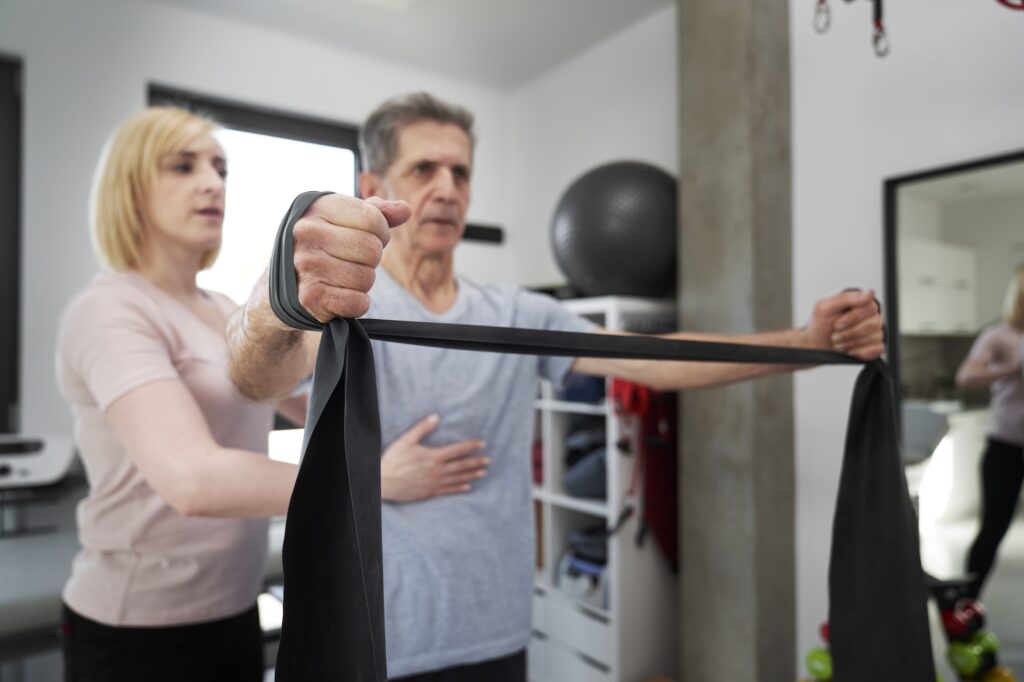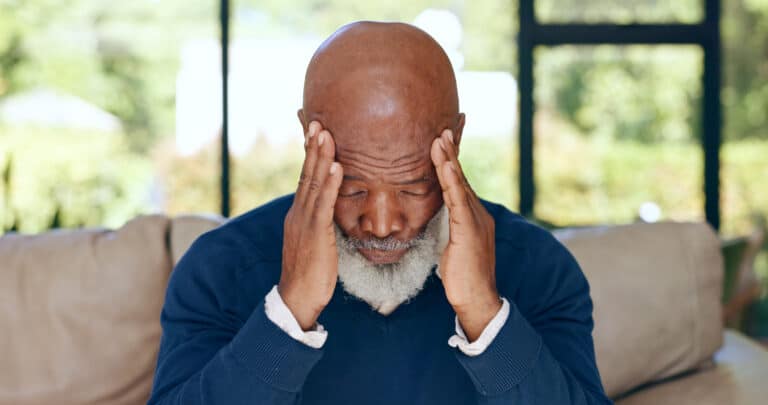Strokes are some of the most common neurological conditions in the United States, affecting roughly 800,000 people each year.
A stroke can cause both physical and mental impairments, making normal activities difficult, but it’s important to remember that damage from a stroke is not always permanent, and once cleared by a doctor, exercise is one of the most important recovery tools for stroke patients. (1)
The Role of Exercise in Stroke Recovery
For stroke survivors, regular targeted exercise can improve strength, mobility, quality of life, and independence. Stroke rehabilitation exercises can include small, low-grade movements as well as larger, more complex ones depending on the nature of a brain injury.
Regular exercise can lead to greater independence while reducing complications and common risks for stroke survivors like falls and heart disease.
Guidance from both physical and occupational therapists is helpful to build an appropriate recovery exercise program as a stroke survivor seeks to regain function for daily living.

Depending on the areas affected, ideal programming for recovery will include both task-specific training and aerobic exercise.
Aerobic exercise can be particularly helpful for stroke patients to improve heart function and reduce the risk of future strokes. Cardiovascular fitness can also lessen depressive symptoms, improve blood flow, and improve the overall quality of life throughout the recovery process. (3)
Task-specific exercises for stroke patients with paralysis can help to restore muscle strength and coordination in muscles weakened by the stroke. For example, exercises like Tai Chi or treadmill walking have been shown to be particularly effective for regaining walking and posture function for day-to-day tasks. (2)
Regardless of the nature of the stroke, it’s important to begin a program early, ideally beginning with stroke exercises in the hospital, and continuing at home or in rehab as your recovery progresses. (2)
Stroke recovery exercises are usually specific, multifaceted, and guided by a physical therapist. Let’s look at some of the most common elements of a recovery program.
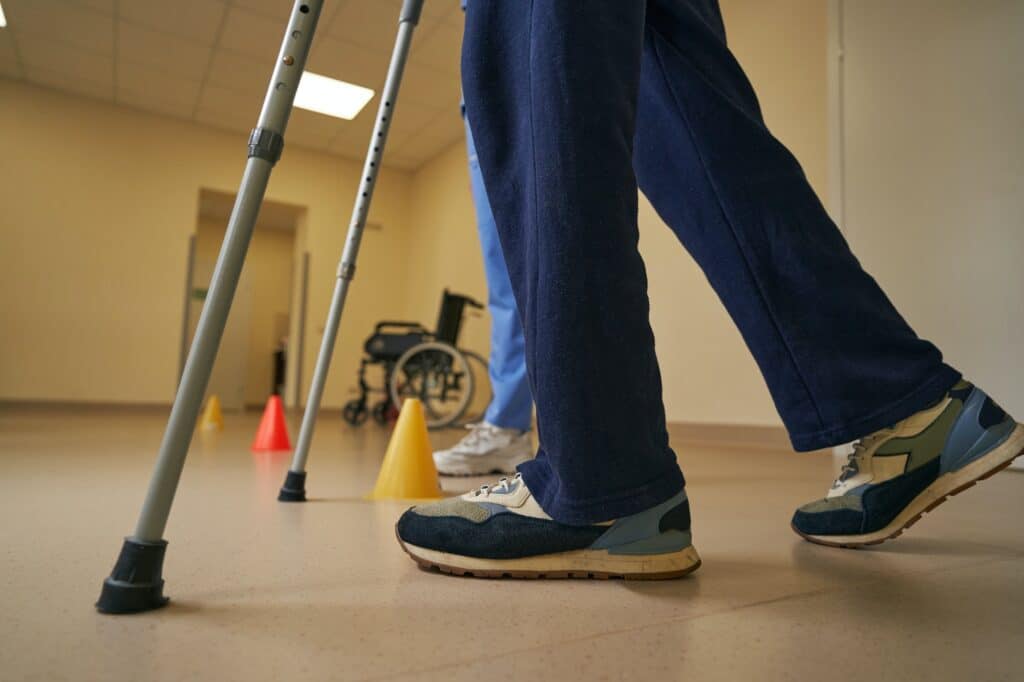
Neuroplasticity
Understanding the role of neuroplasticity can help to underline the importance of exercise in post-stroke recovery.
Neural pathways in the brain have a natural ability to reorganize and restructure in response to learning and practice. Neuroplasticity is the brain’s ability to grow and develop as a result of experience.
After a stroke, stimulation of the peripheral nervous system – the connection of the outer body to the brain – can retrain the brain and body to regain lost areas of function.
Methods like electrical stimulation can also help to correct muscle weakness on the stroke-affected side to re-learn functions that may have been lost as a result of your brain injury. (3)
Functional Movement
The term “functional movement” refers to movements that you might encounter in your day-to-day life, which can be trained just like other exercises.
Deliberately performing basic functional movements like using your hands, walking, standing from a seat, and using stairs are important parts of post-stroke recovery.
Repetition is important in improving daily functioning, and doing these exercises over and over can help your brain to make the most out of the neuroplasticity principle.
For example, one of the most commonly performed progress tests for stroke survivors involves measures of improvement in walking ability and speed over time. This indicates that the simple act of walking can improve function and predict recovery outcomes in some stroke patients. (2)
During initial recovery, constraint-induced movement therapy is a particularly beneficial functional method. This technique involves restricting your fully functioning limb from movement, forcing you to use your affected limb to perform activities, and discouraging patients from favoring their unaffected limb. (1)
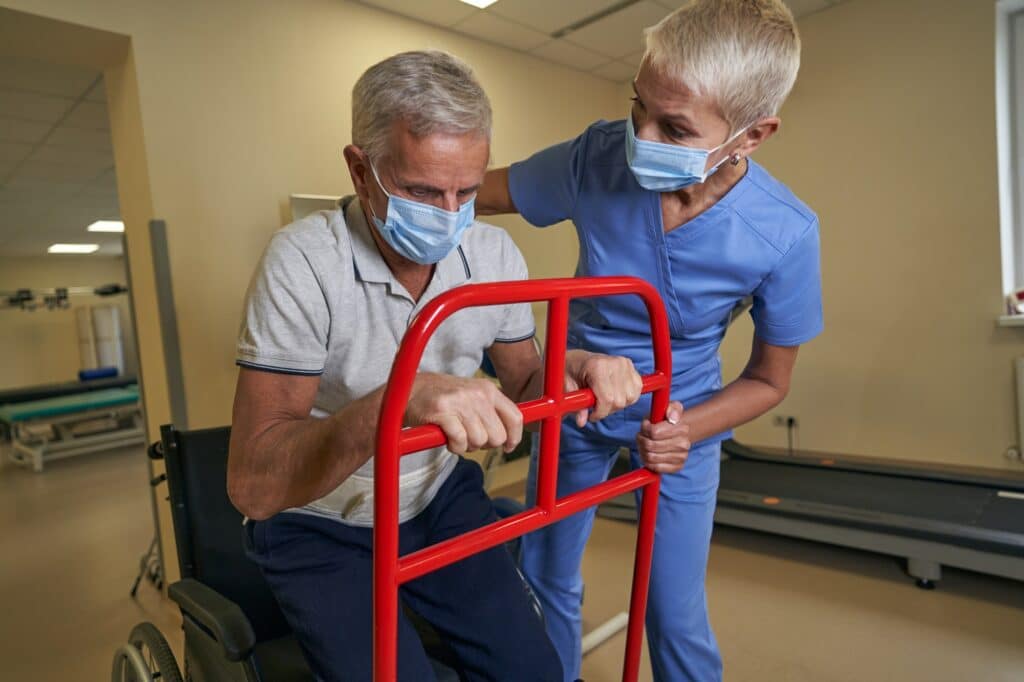
Balance Exercise
Improving balance is central to most stroke rehab programs, as a lack of balance control can put you at risk for falls and avoidable injuries from equilibrium impairment and weakness.
Carefully reaching outside of your base of support, standing with your feet close together, or turning your head side-to-side while walking are examples of common balance exercises for stroke patients.
More advanced balance exercises might include standing on one leg, skipping, or walking on uneven surfaces. (2)
Balance challenge exercises often require more supervision than other exercises, and having another person around to assist during the most challenging exercises – either in PT or at home – is the safest way to practice balance.
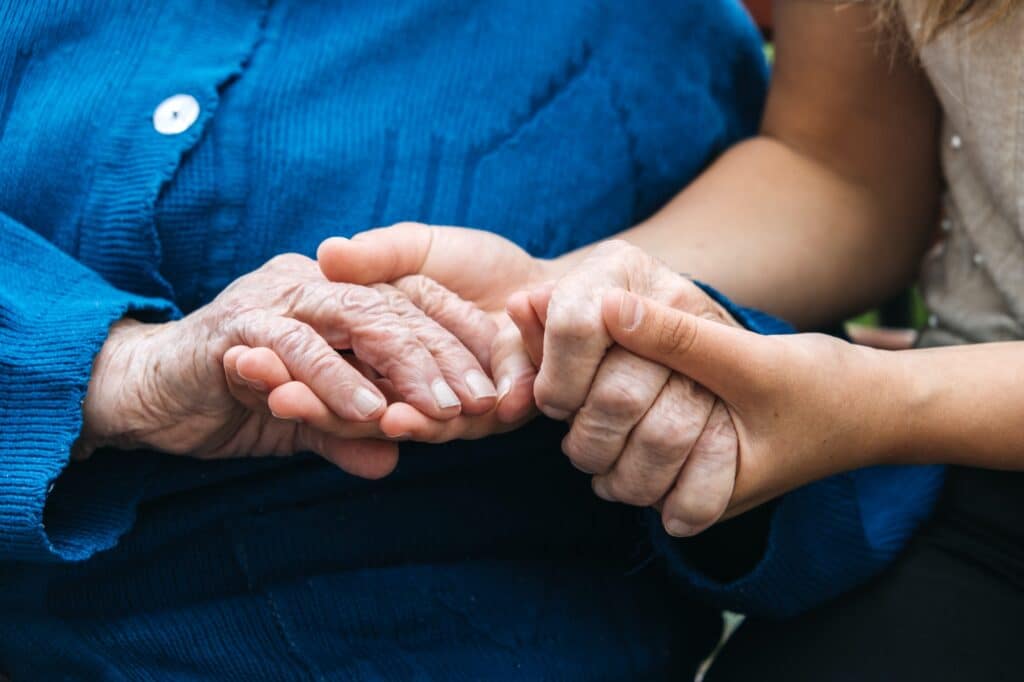
Hand Exercise
Weakened grip and loss of fine motor skills and dexterity are common stroke side effects. As with other elements of your program, your hand exercise routine will be carefully tailored to your needs, whether you require more strength, coordination, or both.
While practicing a variety of hand movements is ideal, it’s best to get some guidance for your hand exercise program from a professional such as an occupational therapist. Some OC stroke exercises might include ball squeezes, resisted finger straightening, or picking up marbles from a table. (4)
Initially during your stroke recovery, performing hand exercises can be frustrating and difficult, but persistence and repetition are both important to rebuild these neural pathways.
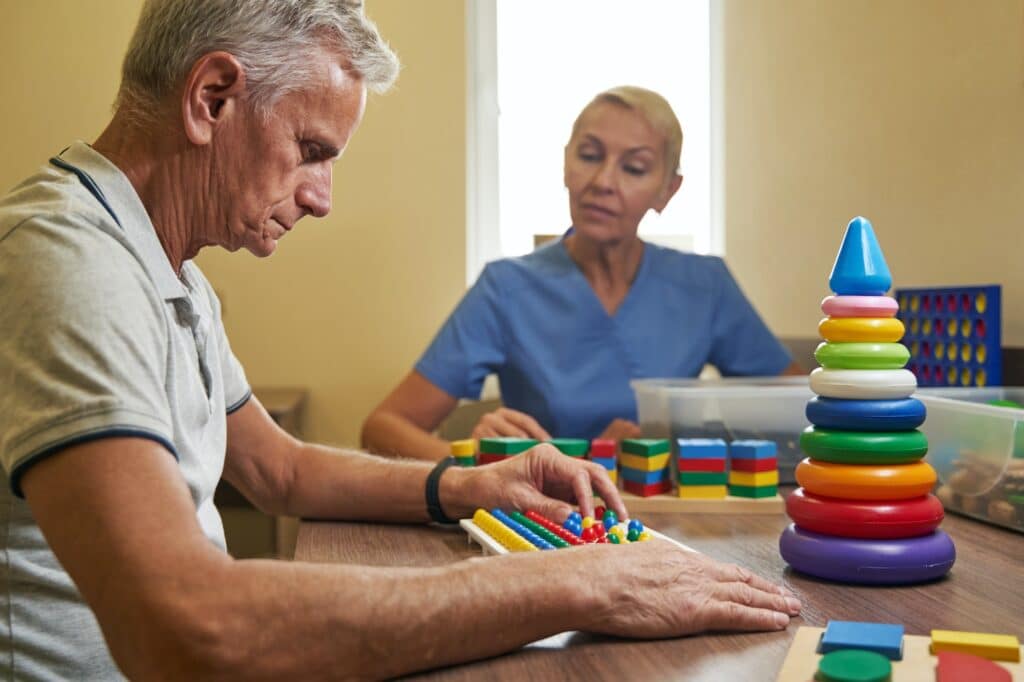
Cognitive Exercise
During a normal day, most tasks involve both a physical and cognitive component; there are not many purely physical acts that we do without thinking and vice versa.
Some of the more frustrating physical deficits of stroke involve memory and thinking. Trouble remembering names, faces, and events is a common issue among stroke survivors, and simple tasks can become a challenge.
As a result, retraining your brain can take more patience and time than retraining your muscles.
Studies show that a combination of physical and cognitive exercise, like playing memory games while stepping over obstacles, offers the best results for cognitive function in post-stroke patients. (1)
Although these exercises may be frustrating, this combination can be especially helpful in recovering both brain health and physical abilities over time.
Speech Exercise
Restoring speech and language abilities post-stroke can be a slow and tedious process. Depending on your impairments, a speech pathologist can help you to identify targeted exercises specific to the areas that are challenging for you.
Depending on where the stroke occurred in the brain, some patients may have more trouble with “finding the right words”, while others may have trouble with articulation. You may even have difficulty with comprehension of what other people are saying.
Similarly, weakness in the facial muscles around your mouth and throat can lead to difficulty chewing and swallowing. For this reason, a speech therapist may help you to adjust your diet for safety to avoid choking or aspiration while eating.
Summary
Stroke recovery is different for every survivor, and rehabilitation can be challenging and complicated, with many ups and downs.
Nonetheless, patience and determination, combined with well-prescribed exercise and attention to re-educating your brain can aid you in your recovery.
Having a comprehensive plan and a well-informed, compassionate therapy and care team is crucial as you navigate the rocky terrain back to a healthy brain.
References
The Mayo Clinic: Diseases & Conditions: Stroke. https://www.mayoclinic.org/diseases-conditions/stroke/symptoms-causes/syc-20350113
Yulin, D., Linman, W., & Yinhu, H. (2022). Exercise for Stroke Rehabilitation: A Bibliometric Analysis of Global Research From 2001 to 2021. Frontiers in Aging Neuroscience, 14. https://www.frontiersin.org/articles/10.3389/fnagi.2022.876954/full
Eng J. J. (2010). Fitness and Mobility Exercise (FAME) Program for stroke. Topics in geriatric rehabilitation, 26(4), 310–323. https://doi.org/10.1097/TGR.0b013e3181fee736.
Dimyan, M. A., & Cohen, L. G. (2011). Neuroplasticity in the context of motor rehabilitation after stroke. Nature reviews. Neurology, 7(2), 76–85. https://doi.org/10.1038/nrneurol.2010.200
Hand Exercises for Stroke Patients. (2022, May 16). Baystate Health. https://www.baystatehealth.org/news/2021/05/hand-exercises-for-stroke-recovery

